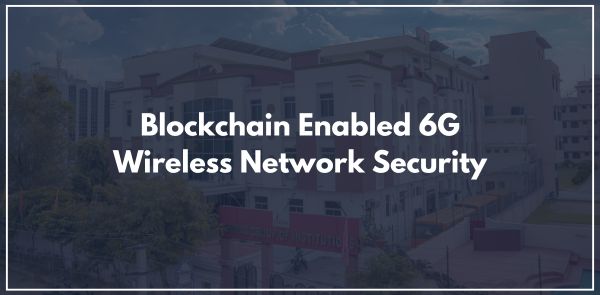The advent of 6G wireless networks promises unprecedented speeds, ultra-low latency, and massive connectivity, revolutionizing industries and enabling novel applications like holographic communication and tactile internet. However, this transformative technology also introduces significant security challenges due to its complex architecture and distributed nature. Traditional security paradigms are ill-equipped to handle the dynamic and decentralized environment of 6G. Blockchain technology, with its inherent security features, presents a compelling solution to address these vulnerabilities.
Security Challenges in 6G:
6G networks, characterized by heterogeneous network slices, edge computing, and AI-driven automation, face several security threats:
- Distributed Denial of Service (DDoS) Attacks: The massive connectivity of 6G increases the attack surface, making it susceptible to large-scale DDoS attacks that can disrupt critical services.
- Data Privacy and Integrity: The vast amount of data generated and processed in 6G networks necessitates robust mechanisms to ensure data privacy and integrity, especially in applications involving sensitive information.
- Authentication and Authorization: Secure authentication and authorization are crucial for managing access to network resources and preventing unauthorized access.
- Trust Management: Establishing trust between diverse network entities, including devices, edge servers, and network slices, is essential for secure communication and collaboration.
- Supply Chain Security: The complexity of 6G supply chains, involving numerous vendors and components, makes it vulnerable to malicious attacks and hardware tampering.
Blockchain as a Security Solution:
Blockchain technology, with its decentralized, immutable, and transparent nature, offers several advantages for enhancing 6G security:
- Decentralized Authentication and Authorization: Blockchain can enable decentralized identity management, allowing devices and users to securely authenticate and authorize themselves without relying on centralized authorities. This enhances security and reduces the risk of single points of failure.
- Secure Data Sharing and Management: Blockchain's immutability ensures data integrity and prevents unauthorized modification. Smart contracts can automate data sharing and access control, enhancing data privacy and security.
- Trust Management and Reputation Systems: Blockchain can facilitate the development of decentralized reputation systems, enabling network entities to assess the trustworthiness of other participants. This can help prevent malicious activities and promote secure collaboration.
- Secure Network Slicing: Blockchain can be used to manage and secure network slices, ensuring that each slice operates independently and securely. Smart contracts can automate the allocation and management of network resources, enhancing security and efficiency.
- Supply Chain Security: Blockchain can enhance supply chain transparency and traceability, enabling the detection of counterfeit components and malicious activities. This can help prevent hardware tampering and ensure the integrity of 6G infrastructure.
- DDoS Mitigation: Blockchain can be used to create a decentralized defense against DDoS attacks, distributing the attack traffic and preventing network congestion.
Implementation Considerations:
Implementing blockchain-based security solutions in 6G networks requires careful consideration of several factors:
- Scalability: Blockchain networks must be scalable to handle the massive data volumes and transaction rates of 6G. Sharding and other scaling techniques can be employed to address this challenge.
- Latency: Blockchain transactions can introduce latency, which is critical in real-time applications. Lightweight consensus mechanisms and off-chain solutions can help minimize latency.
- Interoperability: Blockchain solutions must be interoperable with existing 6G infrastructure and protocols. Standards and APIs are needed to facilitate seamless integration.
- Privacy: While blockchain provides transparency, it's essential to ensure data privacy. Privacy-preserving techniques, such as zero-knowledge proofs and homomorphic encryption, can be used to protect sensitive information.
- Energy Efficiency: Some blockchain consensus mechanisms are energy-intensive, which can be a concern for resource-constrained 6G devices. Energy-efficient consensus mechanisms, such as proof-of-stake, are preferred.
Future Directions:
The integration of blockchain and 6G is still in its early stages, and further research is needed to fully realize its potential. Future research directions include:
- Developing lightweight blockchain protocols for resource-constrained 6G devices.
- Exploring the use of AI and machine learning to enhance blockchain-based security solutions.
- Standardizing blockchain-based security solutions for 6G networks.
- Investigating the use of quantum-resistant blockchain algorithms for future-proof security.
In conclusion, blockchain technology is taught in Computer Application at Poddar International College, Jaipur holds immense promise for enhancing the security of 6G wireless networks. Its decentralized, immutable, and transparent nature provides a robust foundation for addressing the complex security challenges of this transformative technology. By leveraging blockchain, 6G networks can achieve greater security, privacy, and trust, paving the way for a more secure and connected future.
